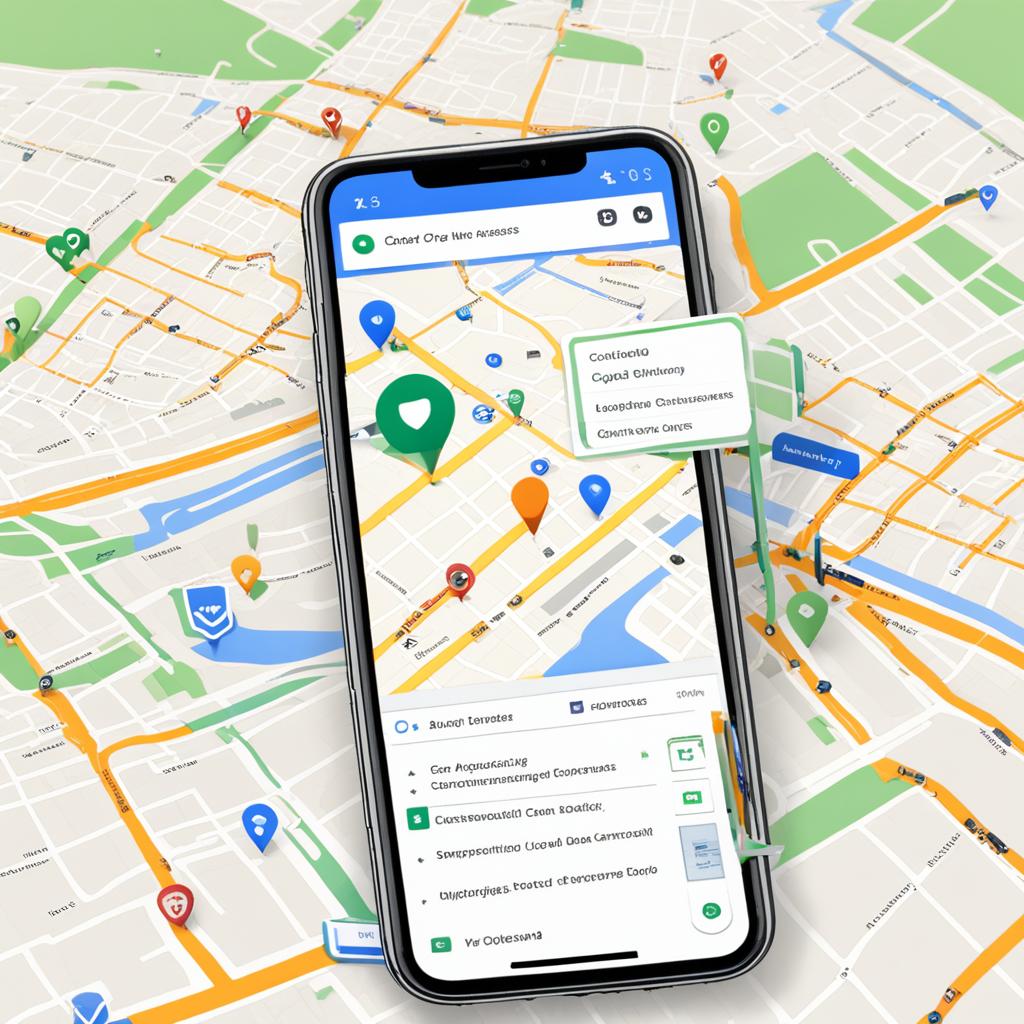Ever wonder why some businesses get a lot of online notice? It’s all about mastering search engine optimization (SEO). This crucial part of digital marketing strategies helps increase your online presence. Picture your brand popping up first in customer searches. That’s SEO’s magic.
According to Search Engine Journal, SEO makes your content more visible. This means search engines will likely show it first for searches. HubSpot says good SEO builds your brand’s trust. But Forbes adds, SEO also improves user experience. This helps keep customers coming back.
Using SEO wisely can bring SEO benefits for businesses. It’s key for growth and lasting success online. Stick with us to learn how SEO can help your company grow.
Understanding the Basics of SEO
Diving into digital marketing means learning the key SEO ideas. These are vital for making your site more visible on search engine results pages (SERPs). Let’s get into what SEO is and why it’s key for doing well online.
Defining SEO and Its Importance
SEO stands for Search Engine Optimization. It’s about making your site better seen when people look for what you offer. With organic search rankings high, more folks are likely to see and visit your business online.
The Evolution of Search Engines and SEO
Knowing how search engine algorithms work is crucial for SEO. These algorithms have grown a lot, becoming smarter at understanding what users want. They now show users content that is truly useful and relevant.

Your SEO plan must focus on more than just keywords. Quality content that meets user needs is essential now. Google’s “How Search Works” report shows how smart technologies have improved content analysis. This makes genuine, user-focused SEO strategies more critical than ever.
Remember these important points on fundamental SEO concepts, search engine algorithms, organic search rankings, and search engine results pages (SERPs). With this knowledge, you can create plans that fit today’s SEO needs. Your site will not just draw visitors, but also engage and keep them.
The Role of Keywords in SEO
Knowing how keywords affect your SEO strategy is key. You may have heard about keyword research without fully understanding its importance. Let’s make this easier to grasp.
Keyword intent is about what people are actually looking for when they search online. Figuring this out can make your content more relevant. This relevance improves your SERP rankings.
Different keywords serve different needs. Broad keywords draw lots of traffic but are competitive. Long-tail keywords are specific and attract less competition. They lead to higher conversion rates. Using them is smart for targeting detailed searches.
- Keyword Research: This is about finding what potential customers are looking for that connects to your products or services.
- Keyword Intent: Knowing if users want to buy, learn, or find a location helps shape your content.
- Long-tail Keywords: These are key for attracting targeted traffic that’s further along in the buying process.
- SERP Rankings: High rankings mean more visibility. The right keywords can dramatically improve where you stand.
Ahrefs and SEMrush stress putting keywords in content, meta tags, URLs, and social media. Using keywords well across your online space boosts SEO efforts.
Find a balance between broad and long-tail keywords to make your content both reachable and relevant, matching different stages of the buyer’s journey.

Using keywords right is not just about better search results. It’s about connecting with your audience at each step of their searches. Good keyword research and understanding intent lets you reach people at every point in their journey. This improves both the quality and quantity of your traffic.
Strategies for On-Page SEO Optimization
Boosting your website’s on-page SEO is key for better visibility. It helps connect with both search engines and people. With strong on-page SEO steps, your site’s engagement, content quality, and links can improve a lot.
Content Quality and Relevance
Good content is at the heart of on-page SEO. The Content Marketing Institute says to create content that answers questions and keeps readers hooked. Your content should be detailed and easy for search engines to understand and rank. Great content means people stay longer on your site and don’t leave quickly.
Website Structure and Navigation
Yoast SEO talks about how a site’s layout matters for both user happiness and SEO scores. A clean layout with simple navigation makes linking easy and helps search engines list your pages. This logical setup offers a better browsing experience, making users more likely to come back or make a purchase.
Meta Tags and Descriptions
Moz explains that meta tags tell search engines what your site’s about. Great meta descriptions and titles make your site stand out in search results. They act like an ad for potential visitors. Using these tags well can boost your site’s visits.

Putting good on-page SEO actions into practice involves balancing several factors. Here’s a quick look at important ones:
| SEO Element | Description | Impact on SEO |
|---|---|---|
| Quality Content | High-quality, engaging, and relevant information tailored to user intent | Increases user engagement, dwell time, and overall site authority |
| Logical Structure | Well-organized site with easy navigation and robust internal links | Enhances indexing and usability, improving user experience and SEO |
| Meta Tags | Well-crafted titles and descriptions that effectively communicate page value | Improves visibility and click-through rates from SERPs |
Improving Your Site’s Visibility with Off-Page SEO
Off-page SEO is as important as on-page strategies for increasing your site’s visibility. It involves important tactics like creating authoritative backlinks, using social media, and sharing your content on different platforms. These steps can lift your position in search engine rankings and make your online presence stronger.
Building Backlinks
Getting high-quality backlinks from top websites is a key strategy. These links act as a vote of confidence for your content. They tell search engines that your site is a reliable source of information. Aim for quality links over lots of low-quality ones. A link from a top site is way better than many from unknown ones.
Social Media Influence
Social signals, such as shares, likes, and comments, can boost your site’s visibility. While they don’t directly change your rankings, they increase brand awareness and web traffic. This activity shows search engines that your content is engaging and worth sharing.

Guest Blogging and Content Marketing
Guest blogging helps you reach more people and improve your site’s authority. It lets you link back to your site from other reputable platforms. Besides earning backlinks, it establishes you as an expert in your field. Such efforts are crucial for a strong off-page SEO plan.
Technical SEO: Ensuring Your Website Meets Search Engine Requirements
Today’s online world demands a strong technical base for your website. It’s crucial to focus on website speed optimization, fixing crawl errors, and adopting a responsive design. Also, don’t forget to secure your site with a secure sockets layer (SSL). These steps are vital for better site performance and security.
Let’s start with website speed optimization. Did you know that fast-loading sites offer a better experience for visitors? Google’s PageSpeed Insights is a great tool that can help. It gives tips to make your site load faster. Fast sites make visitors happy, which means they stay longer and might buy something.
Dealing with crawl errors is also key. These errors can stop search engines from indexing your site properly. Tools like Google Webmaster Tools are great for finding and fixing broken links and server issues. This makes sure search engines can find and show your site.
Don’t overlook responsive design either. More people than ever use their phones to browse the web. A site that looks good on any device is essential. Not only does it create a better experience, but it also helps with search engine rankings. This is because search engines prefer sites that are mobile-friendly.
Finally, having a secure sockets layer (SSL) is a must. SSL keeps the data shared between your site and its users safe. Search engines give secure sites a boost in rankings. This shows users and search engines that your site is safe and trustworthy.
| SEO Factor | Tool/Technique | Benefits |
|---|---|---|
| Website Speed Optimization | Google PageSpeed Insights | Improves user experience and increases retention and conversion rates |
| Crawl Errors | Google Webmaster Tools | Ensures smooth indexing which improves site visibility and ranking |
| Responsive Design | Mobile-first Coding Practices | Enhances user experience across devices and contributes to higher SEO rankings |
| Secure Sockets Layer (SSL) | GlobalSign SSL Certificates | Secures user data, enhances trust, and boosts SEO rankings |

Utilizing SEO Tools and Analytics
In today’s digital world, using effective SEO tools and understanding analytics is key. These can help improve your website’s visibility and how well it performs.
Free and Paid SEO Tools
When it comes to SEO tools, there are many choices. You can find free tools like Google Analytics that give basic insights. These are great for tracking your SEO progress and keywords. If you need more detail, paid tools offer deeper insights and support.
Interpreting Analytics for SEO Insights
Knowing how to read data from tools like Google Analytics is crucial. It helps you see if your SEO work is paying off. You can track visitor behavior and see where your traffic comes from. This info helps you pick the best keywords to improve your website’s ranking.

Tracking keywords also lets you spot trends and tweak your plans. Staying on top of these changes keeps your site performing well, even when search engines update their algorithms.
| Tool | Use Case | Key Feature |
|---|---|---|
| Google Analytics | General SEO Monitoring | Traffic Source Analysis |
| SEMRush | Keyword Research and Tracking | Competitor Keyword Analysis |
| Moz Pro | SEO Reporting | Site Audit & Optimization Suggestions |
| Ahrefs | Backlink Analysis | Backlink Quality Score |
Using these tools well means checking your stats often. Then you adjust your strategy based on what the numbers show. This boosts your site’s SEO and makes your digital marketing more effective.
Local SEO: Capturing Your Local Market Online
Grasping local search optimization boosts your visibility and brings local shoppers. Using Google My Business, managing reviews, and accurate citations are key. They help lead the local search game.
With Google My Business, you control how you appear on Google Search and Maps. Keep your profile updated with fresh info, photos, and deals. This not only improves your visibility but also attracts customers.

Local citations and reviews boost your business’s credibility and visibility. Citations from respected sites enhance your authority. Meanwhile, customer reviews share real experiences and sway buyers. Both are vital for your local SEO success.
It’s crucial to keep your business details consistent across platforms. Your name, address, and phone number must match everywhere. Any mistakes can confuse customers and drop your search ranking.
Remember, optimizing for local search is about showing trustworthiness and authority to Google and potential customers.
Follow this guide to make your local SEO work:
- Verify and optimize your Google My Business listing.
- Keep local citations uniform to increase domain authority.
- Get positive reviews from happy customers and address feedback.
Table: Essential Components for Effective Local SEO
| SEO Component | Description | Impact on SEO |
|---|---|---|
| Google My Business | Tool for managing online presence across Google | Direct |
| Online Reviews | Customer feedback on products/services | Indirect (influences buyer decisions and trust) |
| Local Citations | Mentions of local business information on websites | Direct (helps in SERP ranking) |
Merge these methods into your local SEO strategy to boost online presence and draw more local customers. Let Google My Business, citations, and reviews raise your profile in the local market.
Making Your Content Mobile-Friendly
The world is getting more digital every day, making mobile-friendly websites a must. An optimized website provides a great user experience on smartphones and tablets. This caters to the many users who surf the web on their mobile devices.
The Rise of Mobile Searches
Now, more people search on mobile devices than on computers in many areas. This shift highlights the need for a mobile-first approach. It ensures websites work well and are easy to use on mobile devices.
Mobile Optimization Best Practices
At the heart of making a site mobile-friendly is responsive web design. This approach allows a site to adjust to any screen size, ensuring a good mobile experience. Google advises using responsive design for better rankings in mobile searches. Also, making buttons, text, and menus easy to use on small screens is key.

| Feature | Importance | Description |
|---|---|---|
| Responsive Layout | Critical | Adapts to any screen size automatically, providing a consistent experience across devices. |
| Touch Optimizations | High | Ensures interactive elements are touch-friendly, with adequate space and responsive design. |
| Fast Load Times | Essential | Improves overall performance and keeps users engaged, crucial for retaining mobile search users. |
| Accessible Navigation | Important | Menus and buttons easy to find and use, enhancing the overall user experience on mobile devices. |
Focusing on mobile users improves a site’s performance on all devices. This is critical for any digital strategy today. Making your site mobile-friendly is necessary for online success and visibility.
Common SEO Mistakes to Avoid
Avoiding SEO mistakes can really boost your site’s ability to reach people. Knowing these errors helps you make better content. This ensures your site draws in and keeps users interested.
Poor Keyword Selection and Stuffing
Choosing the wrong keywords is a big SEO mistake. When they’re too broad or too tough, they won’t bring in the right traffic. Also, cramming your content with these keywords makes it hard to read. Use keywords to improve, not hurt, your content.
Neglecting User Experience (UX)
Good user experience is more than just sharing info. If your site is hard to use or slow, people get upset. This can hurt your site’s ranking and make people leave. Make sure your site is easy to use and fun for visitors.
Inconsistent Content Publishing
Having a good content plan means posting regularly. This keeps people coming back for more. If you don’t post often, you’ll lose readers and your SEO will suffer.

To see how these mistakes can affect your SEO, check the table below. It shows what each error does and how to fix it.
| SEO Mistake | Potential Impact | Remedial Action |
|---|---|---|
| Poor Keyword Selection and Stuffing | Low-quality traffic, poor user experience | Utilize precise, strategically chosen keywords; focus on user intent |
| Neglecting User Experience | Increased bounce rates, lower conversions | Enhance site navigation and loading speeds; optimize mobile-responsivity |
| Inconsistent Content Publishing | Decreased reader retention and engagement | Establish a regular content calendar; vary content types |
How SEO Ties Into Your Overall Marketing Strategy
Understanding how SEO fits into your total marketing plan is key for a successful integrated marketing approach. SEO doesn’t work by itself. It works well with cross-channel marketing to make your brand more visible online.

SEO plays a crucial role in your entire marketing funnel. It leads potential customers from knowing about you to buying from you. Using SEO well makes your brand shine online, boosting awareness and getting more leads.
| Marketing Stage | Role of SEO | Impact on Brand Visibility |
|---|---|---|
| Awareness | SEO boosts visibility and drives organic search traffic. | Expands reach, introduces brand to potential new customers. |
| Consideration | Content optimization aligns with consumer search intent. | Positions brand as a trustworthy source of information. |
| Conversion | Targeted keywords and optimized landing pages. | Improves user experience, leading to higher conversion rates. |
Linking SEO with cross-channel marketing like social media and email markets builds a connected customer path. It highlights your brand’s story and boosts your online presence. This key step puts your brand in the spotlight for customers.
Adding SEO to your integrated marketing plan boosts your website’s traffic. It leads to more visibility for your brand online and more marketing wins overall.
Conclusion
Investing in SEO is more than just a tactic. It’s a strategic move that benefits your digital marketing long term. Entrepreneur magazine shows that SEO investment is crucial for ongoing business growth. By putting resources into SEO, you’re creating a machine. This machine keeps increasing your visibility, credibility, and revenue over time.
Thinking about your online success? See SEO as the foundation of your digital world. According to a report by McKinsey & Company, SEO is key to a winning online presence. Your web growth is closely linked to how well you use SEO. It lets you stand out in a crowded market, improve visibility, and connect with your audience. SEO plays a vital part in the story of your brand’s success.
Heading into the busy digital marketplace, don’t forget SEO’s role in your growth and success online. Remember, your digital marketing efforts add up. With every SEO-optimized page or blog, you’re building a stronger brand for the future. This journey is a marathon, not a sprint. Your dedication to SEO will make you stand out in the digital world.


Leave a Reply
You must be logged in to post a comment.